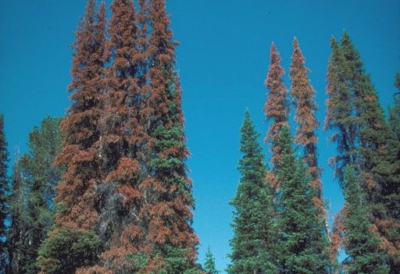The western balsam bark beetle has a shiny, dark coat. When you look closely, you’ll be able to see rounded wing covers and hair-like patches on their heads. Those with darker and more distinctive hairy patches are the females. They prefer to live within subalpine firs and other true firs, but will sometimes live in lodgepole pines and Engelmann spruces.
These beetles live for just two years or so, although the full biology is unknown. The first year winter of their lives they will remain under the bark of trees, getting protection from the elements
Unfortunately, the trees are negatively affected by the western balsam bark beetles. In fact, they’re one of the main reasons for subalpine firs dying. The galleries make it difficult for nutrients to pass through the trees, causing root diseases to take effect. Trees also become weaker due to the galleries, meaning that trees are more susceptible to wind and drought damage.
You won’t usually see widespread tree mortality like you would with some other tree beetles. The uniform, widespread mortality takes years to witness, making it easier to manage the population and protect the tree life.
Once you know what to look for, you can start taking steps to manage the western balsam bark beetle size and affect on trees. If you suspect you have Western balsam bark beetle infestation, contact SprayTech at 720.248.0000 for treatment options.
Comments are closed.